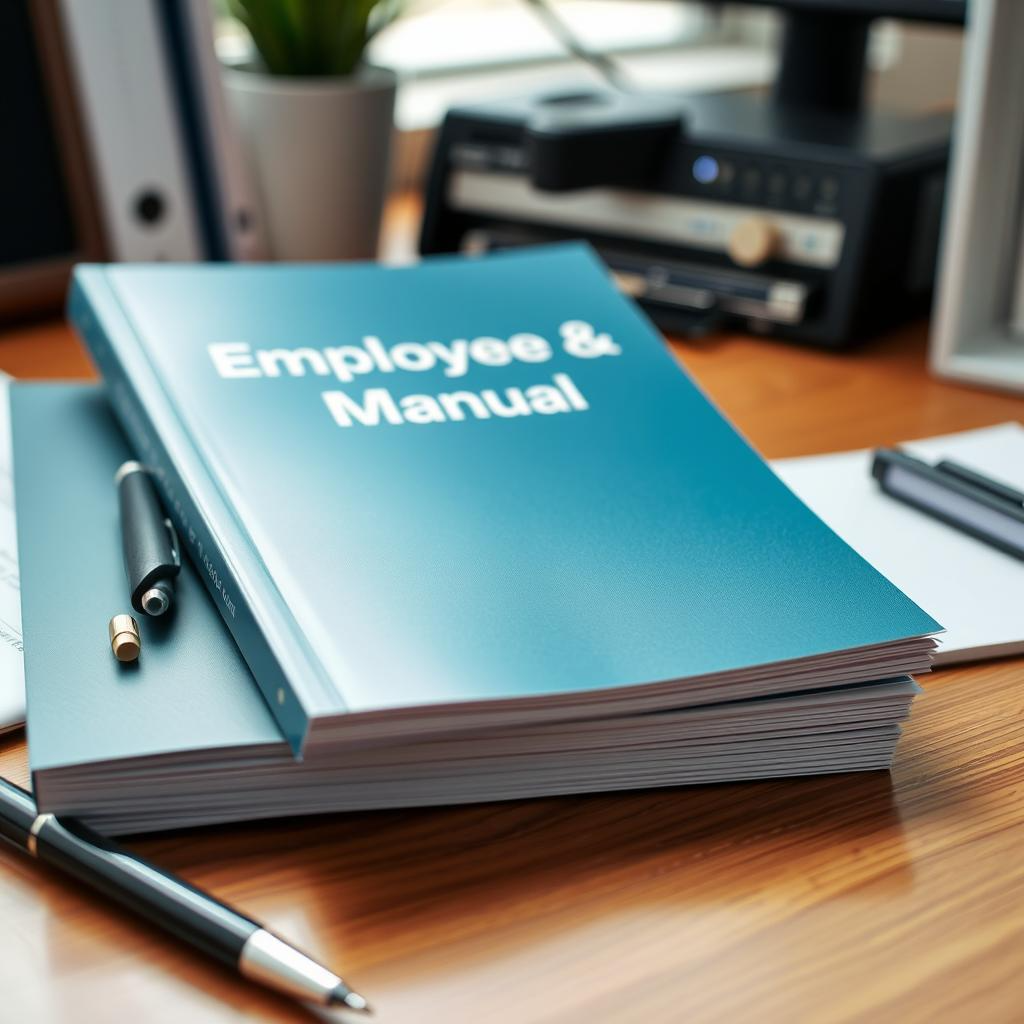Navigating the Workplace: Your Essential Guide to EEOC
Sexual Harassment Guidance

As a new supervisor, manager, or business owner, you're tasked with fostering a productive and positive work environment. A critical component of this responsibility is understanding and actively preventing sexual harassment. To effectively achieve this, familiarizing yourself with EEOC sexual harassment guidance is paramount. This comprehensive resource from the Equal Employment Opportunity Commission (EEOC) provides essential frameworks and best practices for creating a workplace free from unwelcome sexual advances, requests for sexual favors, and other verbal or physical conduct of a sexual nature. This article will delve into why understanding and implementing the EEOC sexual harassment guidance is crucial, how to build a robust sexual harassment policy, and the benefits of a well-defined employee policy and procedures manual to ensure every employee is treated fairly and consistently.
Why Taking Advantage of the EEOC Sexual Harassment
Guidance is so Important

The EEOC sexual harassment guidance is not merely a set of abstract rules; it's a vital tool for protecting your employees and your business. Ignoring or misunderstanding this guidance can lead to serious repercussions, including costly lawsuits, reputational damage, and decreased employee morale and productivity. By proactively engaging with the EEOC sexual harassment guidance, you demonstrate a commitment to ethical conduct and a safe workplace, which can significantly mitigate these risks.
The EEOC sexual harassment guidance defines what constitutes sexual harassment, which includes both quid pro quo harassment (where employment decisions are based on submission to or rejection of sexual advances) and hostile work environment harassment (where unwelcome conduct is so severe or pervasive that it alters the conditions of employment and creates an abusive working environment). Understanding these distinctions, as outlined in the EEOC sexual harassment guidance, allows you to recognize potential issues before they escalate. It's crucial for you, as a leader, to grasp the nuances of what the EEOC sexual harassment guidance considers unacceptable behavior.
Implementing policies and procedures aligned with the EEOC sexual harassment guidance shows your employees that you take their well-being seriously. This fosters trust and encourages open communication, making individuals more likely to report concerns without fear of retaliation, a key tenet of the EEOC sexual harassment guidance. Furthermore, by thoroughly understanding the EEOC sexual harassment guidance, you equip yourself to respond effectively and appropriately to any allegations that may arise. This proactive approach, informed by the EEOC sexual harassment guidance, is far more beneficial than reacting to a crisis.
The EEOC sexual harassment guidance also emphasizes the importance of preventative measures. It's not enough to simply react to complaints; you must actively work to prevent sexual harassment from occurring in the first place. This involves training your workforce on what constitutes sexual harassment, how to report it, and your company's zero-tolerance policy, all of which are detailed within the EEOC sexual harassment guidance. A comprehensive understanding of the EEOC sexual harassment guidance empowers you to create a preventative culture.
Building a Robust Sexual Harassment Policy: The
Foundation of Protection

Your sexual harassment policy is the cornerstone of your efforts to comply with the EEOC sexual harassment guidance. This policy should be clearly written, easily accessible to all employees, and regularly reviewed and updated. It should explicitly define sexual harassment, drawing from the definitions provided in the EEOC sexual harassment guidance. Your policy must clearly state that sexual harassment is prohibited and will not be tolerated, reinforcing the principles of the EEOC sexual harassment guidance.
The policy should outline the reporting procedures. Employees must know how to report instances of sexual harassment, who to report to, and what information to include in their report. The EEOC sexual harassment guidance stresses the importance of multiple reporting channels to accommodate different comfort levels and reporting structures. Your policy should offer options, such as reporting to a direct supervisor, HR department, or a designated ethics hotline. It's vital that your policy aligns with the spirit and letter of the EEOC sexual harassment guidance.
Crucially, your policy must include strong anti-retaliation provisions. Employees who report sexual harassment in good faith must be protected from any negative employment actions, such as demotion, termination, or harassment, for coming forward. This is a non-negotiable aspect of the EEOC sexual harassment guidance and essential for creating a safe reporting environment. Without robust anti-retaliation clauses, the EEOC sexual harassment guidance becomes difficult to implement effectively.
Your policy should also detail the investigation process. When a complaint is filed, a prompt, thorough, and impartial investigation must be conducted. This investigation should be conducted by trained personnel, adhering to the principles of fairness and confidentiality as much as possible, in line with the expectations set by the EEOC sexual harassment guidance. The outcome of the investigation and the disciplinary actions taken should be consistent with company policy and the EEOC sexual harassment guidance.
The Power of an Employee Policy and Procedures Manual

While a standalone sexual harassment policy is vital, integrating it into a comprehensive Employee Policy and Procedures Manual offers numerous advantages. This manual serves as a central document for all employment-related policies and procedures, ensuring consistency and clarity for every employee. By including your sexual harassment policy here, you present it within the broader context of workplace conduct and expectations, emphasizing its importance as part of the overall operational framework, much like the EEOC sexual harassment guidance informs broader compliance efforts.
A well-crafted manual helps you manage your organization effectively and FAIRLY. It provides a clear roadmap for supervisors and employees alike, outlining expectations, rights, and responsibilities. This consistency is key to preventing misunderstandings and treating all employees equitably, a fundamental principle reinforced by the EEOC sexual harassment guidance. Having a documented manual that reflects the EEOC sexual harassment guidance provides a solid defense should legal challenges arise.
The manual should cover a wide range of topics, including:
Equal Employment Opportunity and Non-Discrimination: This section should explicitly state your commitment to equal opportunity and prohibit discrimination based on protected characteristics, which is closely related to the principles of the EEOC sexual harassment guidance.
Code of Conduct: This outlines expected employee behavior, including professional conduct, respect for colleagues, and adherence to company policies. It should clearly articulate that conduct violating the sexual harassment policy is unacceptable.
Reporting and Grievance Procedures: This details the process for reporting any workplace issue, including sexual harassment, and the steps taken to resolve grievances. Ensure this section aligns perfectly with the reporting mechanisms outlined in your sexual harassment policy and the EEOC sexual harassment guidance.
Disciplinary Procedures: This explains the consequences of policy violations, ensuring a consistent and fair disciplinary process. This reinforces the seriousness with which your organization addresses issues related to the EEOC sexual harassment guidance.
Training and Development: Outline your commitment to providing training to employees and supervisors on various workplace matters, including sexual harassment prevention, referencing the importance of the EEOC sexual harassment guidance.
By having a comprehensive manual that incorporates your sexual harassment policy and is informed by the EEOC sexual harassment guidance, you create a transparent and predictable work environment. This reduces ambiguity, minimizes the potential for subjective decision-making, and ensures that every employee is treated with fairness and respect. This proactive approach, guided by the EEOC sexual harassment guidance, fosters a culture of accountability and professionalism.
Conclusion
In conclusion, as you step into your leadership role, making the EEOC sexual harassment guidance a cornerstone of your management strategy is non-negotiable. By understanding its tenets, developing a robust and explicitly communicated sexual harassment policy, and consolidating these into a comprehensive employee policy and procedures manual, you are not just complying with legal requirements; you are actively building a workplace where every employee feels safe, respected, and valued. This commitment, reinforced by diligent adherence to the EEOC sexual harassment guidance, is the hallmark of responsible and successful leadership.